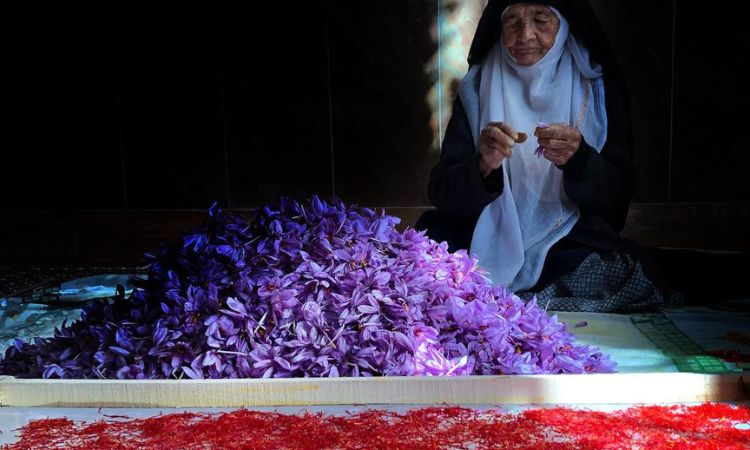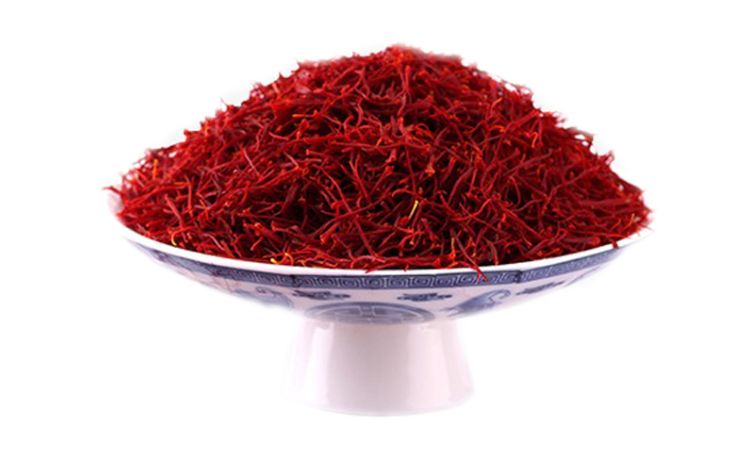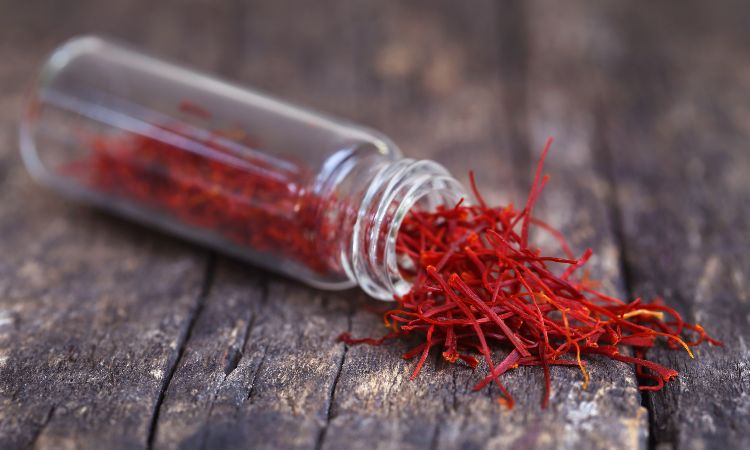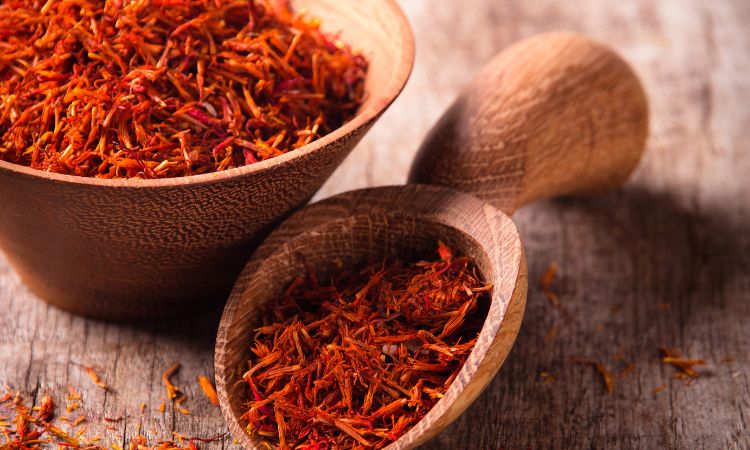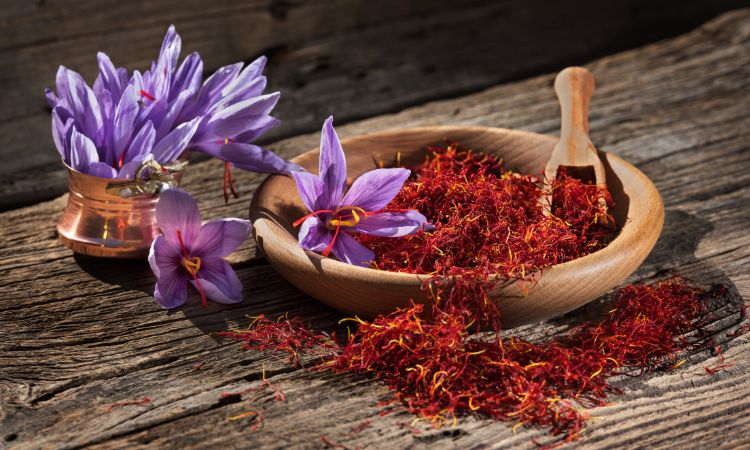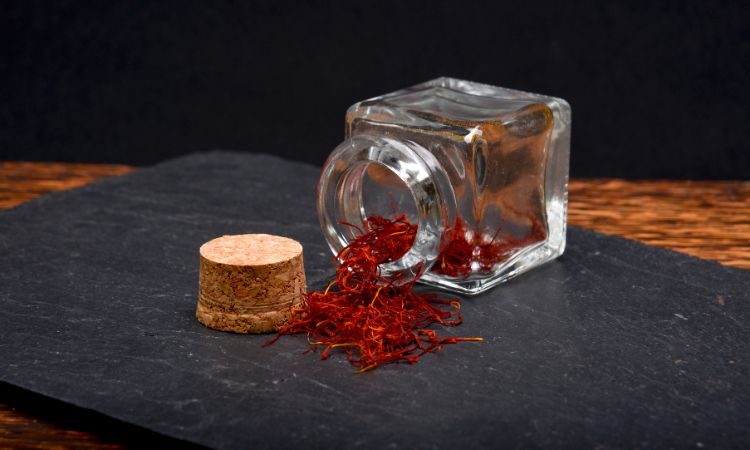In the realm of culinary excellence, saffron reigns supreme as a spice that can transform even the simplest dish into a gastronomic masterpiece. This precious spice, derived from the delicate stigmas of the Crocus sativus flower, is renowned for its vibrant golden hue and its ability to impart a distinctive, complex flavor that can elevate any meal. Whether you’re a seasoned chef or a passionate home cook, mastering the art of saffron seasoning is key to crafting dishes that are both visually stunning and bursting with flavor.
In this comprehensive guide, we’ll explore the essential tips and techniques for using saffron to its fullest potential. From understanding the nuances of different saffron varieties to unlocking the secrets of proper storage and handling, you’ll gain the knowledge and confidence to incorporate this remarkable spice into your culinary creations with precision and finesse.
Key Takeaways
- Saffron is a versatile spice that can enhance the flavor and appearance of a wide range of dishes.
- Proper storage and handling techniques are crucial to preserve the potency and aroma of saffron threads.
- Blooming saffron in warm liquid is the first step to maximize its flavor and color release.
- Measuring and dosing saffron correctly is essential to avoid overpowering or under-seasoning your dishes.
- Exploring traditional pairings and modern culinary innovations can inspire creative ways to use saffron in your cooking.
Understanding Saffron: The World’s Most Precious Spice
Saffron, the vibrant red threads harvested from the Crocus sativus flower, is often referred to as the “world’s most precious spice.” This rare and highly sought-after seasoning has captivated culinary enthusiasts and chefs worldwide, and for good reason. Its distinctive, earthy flavor and ability to enhance the taste of a wide range of dishes make it an indispensable ingredient in the saffron spice guide.
Different Types of Saffron and Their Origins
While saffron is primarily grown in Iran, the spice has a global reach, with distinct varieties hailing from different regions around the world. The most renowned types of saffron include:
- Iranian Saffron: Considered the finest and most sought-after variety, Iranian saffron is renowned for its deep red color, intense aroma, and complex flavor profile.
- Spanish Saffron: Grown in the La Mancha region, Spanish saffron is known for its delicate, floral notes and subtle sweetness, making it a popular choice for saffron flavor enhancers.
- Kashmiri Saffron: Harvested from the high-altitude regions of India’s Kashmir valley, this saffron boasts a vibrant hue and a slightly bitter, hay-like taste.
What Makes Saffron So Valuable
The rarity and labor-intensive harvesting process of saffron contribute to its exorbitant price tag. Each saffron thread must be hand-picked from the Crocus sativus flower, with a single flower yielding only three delicate stigmas. It takes approximately 150 flowers to produce just one gram of saffron, making it the most expensive spice in the world. This exclusivity, combined with the spice’s unique flavor and health benefits, has solidified saffron’s place as a treasured culinary and cultural icon.
Proper Storage and Handling of Saffron Threads
Preserving the potency and flavor of the world’s most precious spice, saffron requires meticulous attention to storage and handling. As a delicate ingredient, saffron demands vigilant care to maintain its unique aroma and vibrant hue.
To ensure your saffron seasoning hacks are always on point, follow these essential saffron storage tips.
- Store saffron threads in an airtight container, shielded from direct sunlight and excessive heat or humidity.
- Maintain a cool, dark environment, such as a pantry or spice cabinet, to prevent the saffron from losing its distinctive flavor and color.
- Minimize exposure to air, as oxidation can quickly degrade the quality of saffron.
- Use saffron within 6 to 12 months for optimal freshness and potency.
When handling saffron, take care to avoid crushing or bruising the delicate threads. Gently pinch the threads between your fingers to measure and add them to your dishes. Avoid cutting or grinding saffron, as this can release its essential oils prematurely, diminishing the flavor.
“Proper storage and handling are the keys to unlocking the full potential of this precious spice.”
By following these simple saffron storage tips and saffron seasoning hacks, you’ll be able to enjoy the vibrant, aromatic essence of saffron in your culinary creations for months to come.
Basic Saffron Seasoning Tips for Beginners
Mastering the art of saffron seasoning can elevate your culinary skills and unlock a world of flavor. As the world’s most precious spice, saffron demands a delicate touch, and beginners must familiarize themselves with the essential techniques to get the most out of this aromatic treasure.
Blooming Saffron: The First Step
The first step in saffron seasoning is the crucial process of “blooming” the threads. Gently infusing the saffron in a small amount of warm liquid, such as broth or water, allows the flavors and vibrant hues to blossom, unlocking their true potential. This simple step ensures the saffron’s essence is evenly distributed throughout your dish.
Measuring and Dosage Guidelines
- When it comes to saffron, less is often more. A little goes a long way, as the threads are highly concentrated in flavor.
- As a general guideline, start with a pinch or two of saffron threads per dish, and adjust the amount to suit your taste preferences.
- Saffron’s potency can vary based on origin and quality, so it’s essential to experiment and find the right balance for your recipes.
Common Mistakes to Avoid
- Overuse of Saffron: Excessive amounts can result in a bitter, overpowering flavor that dominates the dish.
- Failing to Bloom the Saffron: Skipping this crucial step can lead to an uneven distribution of flavor and color.
- Mixing Saffron with Hot Liquids: Adding saffron directly to boiling liquids can cause the threads to release bitterness and become dull in color.
By mastering these basic saffron seasoning techniques, you’ll be well on your way to creating dishes that are infused with the captivating aroma and vibrant hues of this extraordinary spice.
Best Cooking Methods to Extract Maximum Flavor
Saffron, the world’s most precious spice, is renowned for its captivating flavor and vibrant color. To fully unlock the potential of this culinary gem, understanding the best cooking methods is crucial. From saffron infusion to dry-toasting, let’s explore the techniques that will help you extract the maximum flavor from your saffron.
Saffron Infusion
One of the most effective ways to bring out saffron’s flavor is through infusion. Start by gently warming milk, broth, or water, then add a pinch of saffron threads. Allow the mixture to steep for 10-15 minutes, enabling the spice to release its essential oils and impart its signature taste and hue.
Dry-Toasting Saffron
For an even more intense saffron flavor, try dry-toasting the threads before incorporating them into your dish. Simply place the saffron in a dry, heated pan and gently toast it for 1-2 minutes, stirring constantly. This process helps to unlock the spice’s aroma and deepens its flavor profile.
Saffron in Diverse Dishes
- Incorporate saffron into rice dishes, such as paella or risotto, to create a vibrant and aromatic meal.
- Add saffron to baked goods like breads, pastries, and cakes for a touch of elegance.
- Utilize saffron in seafood dishes, such as bouillabaisse or saffron-infused shrimp, to elevate the flavors.
- Experiment with saffron in sauces, marinades, and dips to enhance the overall saffron culinary uses.
By mastering these techniques, you’ll be able to unleash the full potential of saffron, unlocking its captivating flavor and vibrant hues to create truly extraordinary dishes. Embrace the art of saffron seasoning and let your culinary creations shine.
Perfect Flavor Combinations with Saffron
Saffron, the world’s most precious spice, lends an unparalleled floral and earthy flavor to dishes. While saffron’s distinct taste can stand on its own, it also pairs beautifully with a variety of ingredients, creating harmonious and delightful flavor profiles.
Traditional Pairings
Saffron has long been a staple in classic cuisines, where it has been expertly combined with other iconic flavors. In Mediterranean and Middle Eastern dishes, saffron is often used alongside aromatic spices like cumin, coriander, and cinnamon, as well as creamy dairy products like yogurt and cheese. In Spanish and Italian cooking, saffron complements the richness of seafood, chicken, and rice.
Modern Culinary Innovations
Contemporary chefs are also exploring innovative ways to showcase saffron’s unique taste. Saffron flavor combinations are now being used to add depth and complexity to a wide range of dishes, from savory stews and braises to sweet desserts and cocktails. Pairing saffron with unexpected ingredients, such as citrus, chocolate, or even coffee, can result in surprisingly delicious and memorable flavor experiences.
Whether you’re drawn to traditional recipes or eager to experiment with modern saffron recipes, the world of saffron-infused cuisine offers endless possibilities for culinary exploration and delight.
Signature Dishes Enhanced by Saffron
Saffron, the world’s most precious spice, has the power to transform ordinary dishes into culinary masterpieces. From the vibrant paella of Spain to the luxurious risotto Milanese of Italy, saffron lends its unmistakable aroma and golden hue to some of the most iconic recipes around the globe.
One of the quintessential saffron-infused dishes is the beloved Spanish paella. This rice-based delicacy is elevated by the delicate, floral notes of saffron, which impart a stunning golden color and a depth of flavor that perfectly complements the seafood, meat, and vegetables in the pan.
Another saffron-centric classic is the risotto Milanese, a northern Italian specialty that showcases the spice’s ability to create a creamy, velvety texture. The saffron’s vibrant hue gives the risotto a stunning visual appeal, while its subtle sweetness harmonizes with the savory Parmesan cheese and beef broth.
Across the Mediterranean, the iconic French bouillabaisse also features saffron as a key ingredient. This seafood stew derives its signature golden broth from the addition of saffron, which mingles with the flavors of fresh fish, shellfish, and aromatic herbs to create a truly exceptional dining experience.
Whether you’re enjoying the rich, golden paella, the velvety risotto Milanese, or the fragrant bouillabaisse, the presence of saffron elevates these signature dishes to new heights, showcasing the spice’s ability to transform the ordinary into the extraordinary.
Health Benefits and Nutritional Value
Beyond its captivating aroma and rich, earthy flavor, saffron is recognized for its potential health benefits. This prized spice is packed with antioxidants and has been studied for its possible effects on mood, cognitive function, and more. Saffron, a vibrant and aromatic spice derived from the flower of Crocus sativus, has long been cherished for both its culinary allure and its numerous health benefits. Renowned for imparting a rich flavor and distinct golden hue to dishes, saffron is also recognized for its potential to enhance well-being. Rich in antioxidants, it contains compounds like crocin, crocetin, and safranal, which have been studied for their promising effects on mood, and cognitive function, and even reducing symptoms of anxiety and depression. As people continue to seek natural solutions for various ailments, the therapeutic properties of saffron have increasingly caught the attention of researchers.
In addition to its mood-enhancing qualities, saffron is also believed to support cognitive health. Research suggests that its antioxidant properties may play a crucial role in protecting the brain from oxidative stress, which is linked to neurodegenerative diseases. Furthermore, saffron has been explored for its potential anti-inflammatory effects, which could contribute to heart health and overall vitality. When incorporated into a balanced diet, saffron may serve as a valuable supplement to one’s wellness regimen, allowing individuals to harness its benefits while indulging in its exquisite flavor.
To maximize the potential health benefits of saffron, understanding various saffron cooking techniques is essential. Gently steeping saffron in warm water or broth before adding it to dishes helps release its flavor and color more effectively. This technique not only enhances the visual appeal of meals but also ensures that the spice’s active compounds are fully integrated into the dish. Whether incorporated into risottos, stews, or even desserts, saffron can elevate a variety of culinary creations while also providing a healthful boost.
Ultimately, saffron is more than just a luxury ingredient; it’s a spice that bridges the gap between culinary excellence and holistic health. By embracing saffron cooking techniques and incorporating this vibrant spice into daily meals, individuals can enjoy not only its unique flavor but also reap the myriad health benefits that saffron has to offer. As the fascination with natural remedies continues to grow, saffron remains a potent symbol of the synergy between food and wellness, captivating palates and promoting health in equal measure.
Medicinal Properties
Saffron’s antioxidant properties have been the subject of extensive research. Studies suggest that the active compounds in saffron, such as crocin and safranal, may have anti-inflammatory and neuroprotective effects, potentially offering benefits for conditions like depression, Alzheimer’s disease, and age-related macular degeneration.
Dietary Considerations
- Moderate consumption of saffron is generally considered safe, with a recommended daily intake of 30-50 mg for adults.
- Saffron may interact with certain medications, such as antidepressants and blood thinners, so it’s essential to consult a healthcare professional before adding saffron supplements to your routine.
- Pregnant women and those with pre-existing medical conditions should exercise caution and seek guidance from their doctor before incorporating saffron into their diet.
As with any spice or supplement, it’s crucial to source high-quality saffron and follow recommended dosages to ensure the safe and effective use of this versatile saffron spice guide. By understanding the potential saffron health benefits, you can make informed decisions about incorporating this unique ingredient into your culinary and wellness regimen.
Identifying Quality Saffron and Avoiding Counterfeits
When it comes to purchasing saffron, the key is to identify high-quality, authentic threads. This can be achieved by paying close attention to the spice’s visual cues, and aroma, and sourcing from reputable vendors. Authentic saffron should have a deep, vibrant red hue with delicate, thread-like strands. The aroma should be distinctly floral and earthy, with a subtle sweetness. Avoid any saffron that appears dull, brittle, or lacks the signature scent, as these may be counterfeit products.
To ensure you’re getting the real deal, it’s essential to source your saffron from trusted suppliers. Look for certifications, reviews, and transparency about the origin and processing methods. Purchasing saffron directly from renowned producers or specialty spice retailers can help you avoid the risk of counterfeit goods. By taking the time to identify quality saffron, you’ll be able to unlock the full potential of this precious spice and elevate your culinary creations to new heights.
Remember, saffron seasoning tips and the saffron spice guide are crucial for discerning genuine saffron and incorporating it into your dishes with confidence. With the right knowledge and attention to detail, you can savor the unparalleled aroma and flavor of this extraordinary ingredient.
FAQ
What are some saffron seasoning tips for cooking?
Some of the key tips for using saffron effectively in your cooking include blooming the saffron threads in liquid to release their full flavor, measuring saffron carefully as a little goes a long way, and avoiding common mistakes like overcooking the spice.
How should I store saffron to maintain its potency and flavor?
To properly store saffron, keep the threads in an airtight container away from direct light, heat, and moisture. Optimal storage conditions are in a cool, dry place. This will help preserve the unique aroma and color of your saffron for longer.
What are some of the best cooking methods to extract maximum flavor from saffron?
Techniques like infusing saffron in liquids, dry-toasting the threads, and incorporating saffron early in the cooking process can help extract the most flavor from this precious spice. Experimenting with different cooking methods is key to unlocking saffron’s full potential.
What are some classic flavor pairings that complement saffron?
Saffron pairs beautifully with ingredients like rice, seafood, poultry, nuts, and citrus. Traditional pairings include saffron with dishes like paella, risotto, bouillabaisse, and chicken. Exploring modern flavor combinations can also yield delicious results.
What are the potential health benefits of consuming saffron?
Saffron is believed to have antioxidant properties and may offer benefits for mood, cognitive function, and more. However, it’s important to consult with a healthcare professional regarding appropriate dosages and potential interactions, especially for those with medical conditions or taking medications.
How can I identify high-quality saffron and avoid counterfeits?
Look for saffron threads that are deep red with a strong, pleasant aroma. Avoid saffron that appears faded, brittle, or has an off smell. Purchase from reputable spice merchants or online retailers to ensure you’re getting authentic, high-quality saffron.


